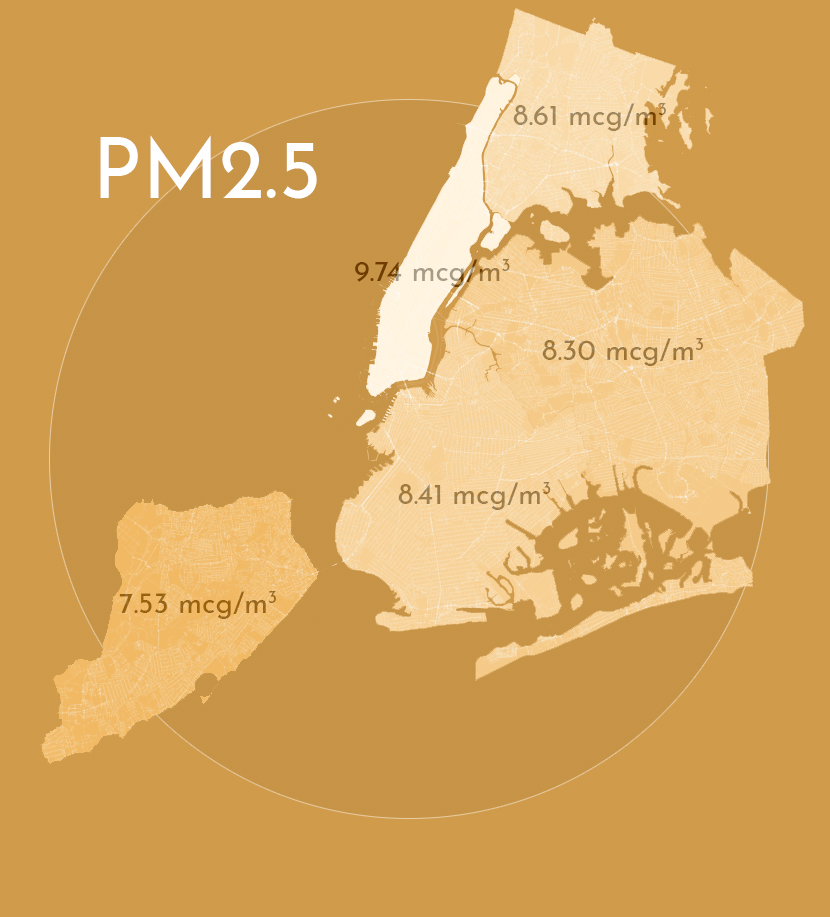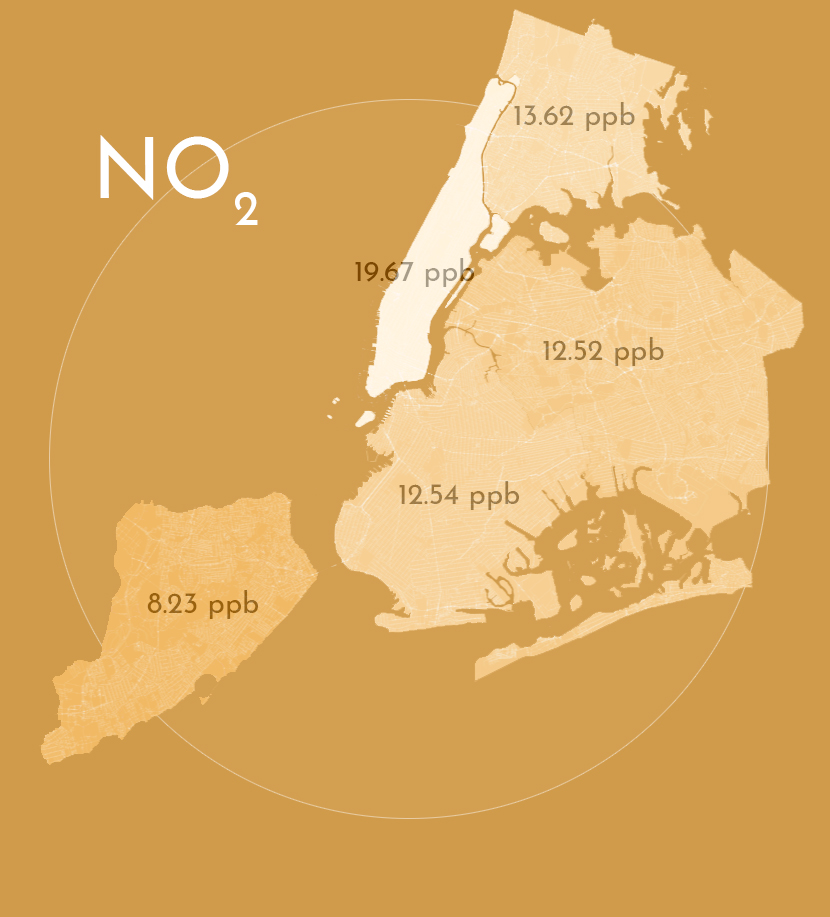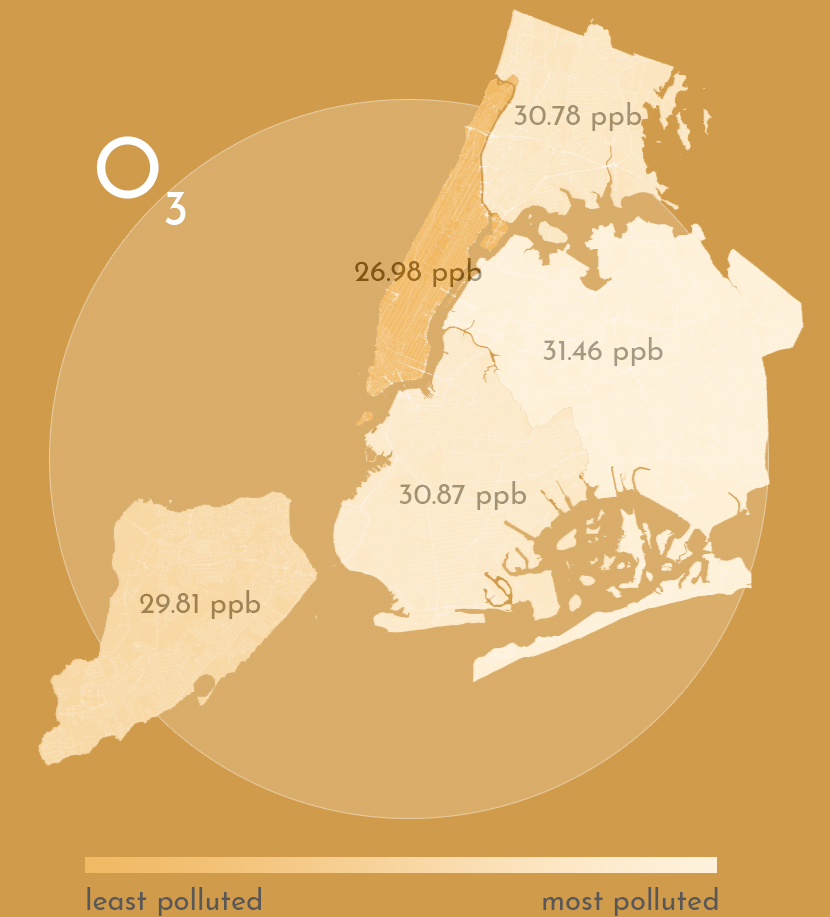Data



Air pollution data is important to a city's health, but the information is difficult to intuitively understand. The three metrics presented here are often used as indicators of air quality. NO2 is mostly a result of car emisions, so it's not surprising that Manhattan is more heavily afflicted. Ozone (O3), on the other hand, is produced indirectly through reactions involving NO2 and other nitrogen oxides. Because fresh NO2 emissions reacts with and removes ozone, Manhattan is less polluted with O3 than, say, Queens.
Data source: Air Quality